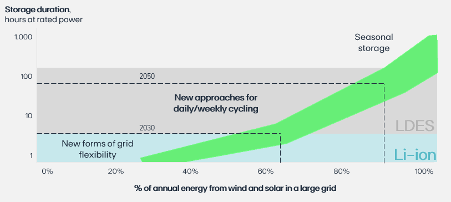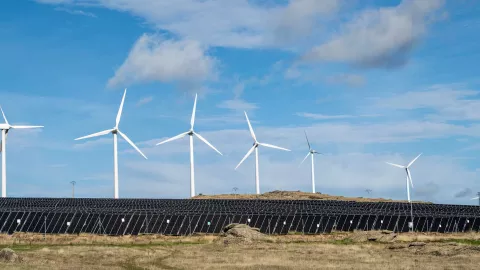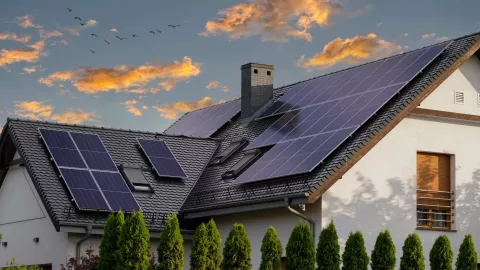Author: Julio Ugalde (Innovation in GEM)
As renewable energy sources expand within our grid, the need for reliable long-duration energy storage (LDES) systems—capable of over 8 hours of storage—is crucial.
LDES technologies go beyond mere storage; they enhance grid stability, optimize energy use, and ensure service reliability.
This article highlights two promising LDES technologies—flow batteries and thermal energy storage (TES)—and their practical applications.

Source: McKinsey/LDES report and Advanced Research Projects Agency-Energy
Flow Batteries: Enhancing Grid Stability and Reliability
Flow batteries are gaining attention due to their cost advantages over traditional lithium-ion batteries for longer storage durations. They offer unique benefits, such as the ability to decouple energy and power, which makes them particularly effective in scenarios where grid reliability is crucial. Additionally, at the end of their life, the electrolyte retains significant residual value, contributing to their sustainability.
In areas with high renewable energy use, flow batteries store excess power during peak generation and release it during low production, ensuring a consistent supply. These systems stabilize microgrids in remote or islanded locations, providing reliable power independently from the main grid. They can also be integrated into utility-scale projects, offering essential grid balancing during periods of low renewable output. Their long discharge capability is ideal for critical infrastructure like hospitals and data centers, where uninterrupted power is vital.
Thermal Energy Storage: Versatile Solutions for Industrial Decarbonization
Thermal energy storage (TES) systems are emerging as key technologies across various industries, with companies like Rondo and Electrified Thermal Solutions (ETS) leading the way. TES systems cater to different temperature ranges, making them adaptable to diverse industrial processes. They can store excess of renewable energy production in the form of heat and supply it directly to operations, which is valuable in sectors requiring consistent heat, such as manufacturing, food processing, and heavy industry.
By providing direct heat, TES systems help industries reduce fossil fuel use, lower emissions, and enhance efficiency. Whether maintaining temperatures for chemical synthesis, supporting continuous food processing, or supplying heat for materials production, TES offers flexible solutions that support decarbonization. These systems store excess heat during low demand and release it as needed, ensuring uninterrupted production even during renewable energy fluctuations.
As LDES technologies like flow batteries and TES continue to evolve, their ability to meet specific storage needs—whether for hours or days of storage duration—will be vital in the renewable energy transition. These versatile solutions can be tailored to diverse sector demands, ensuring a reliable and sustainable shift to clean energy.
Read more

Demand-side flexibility: is it indeed an underdog?


